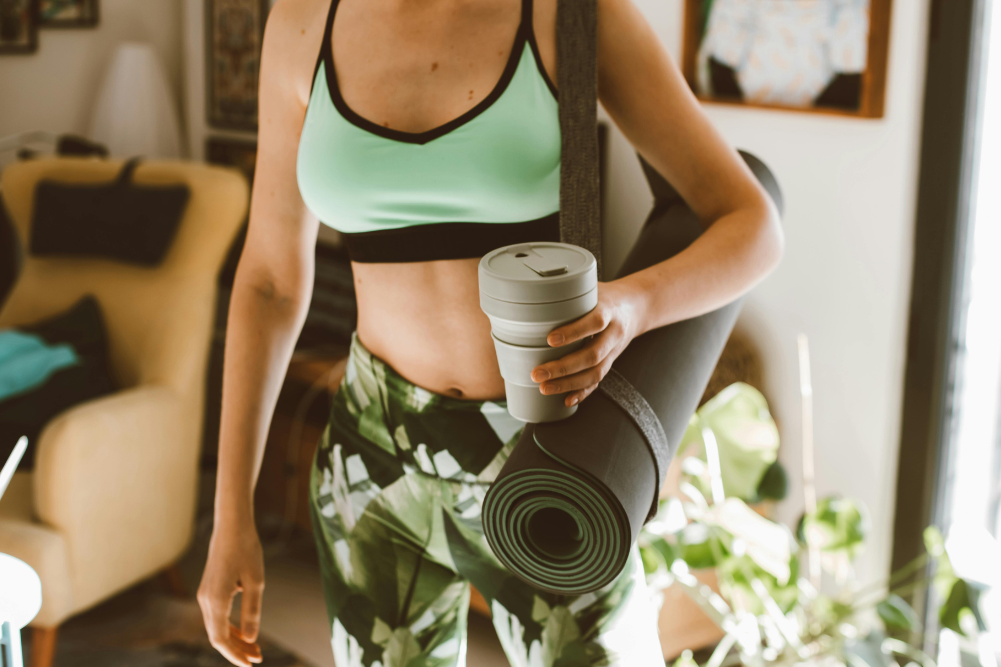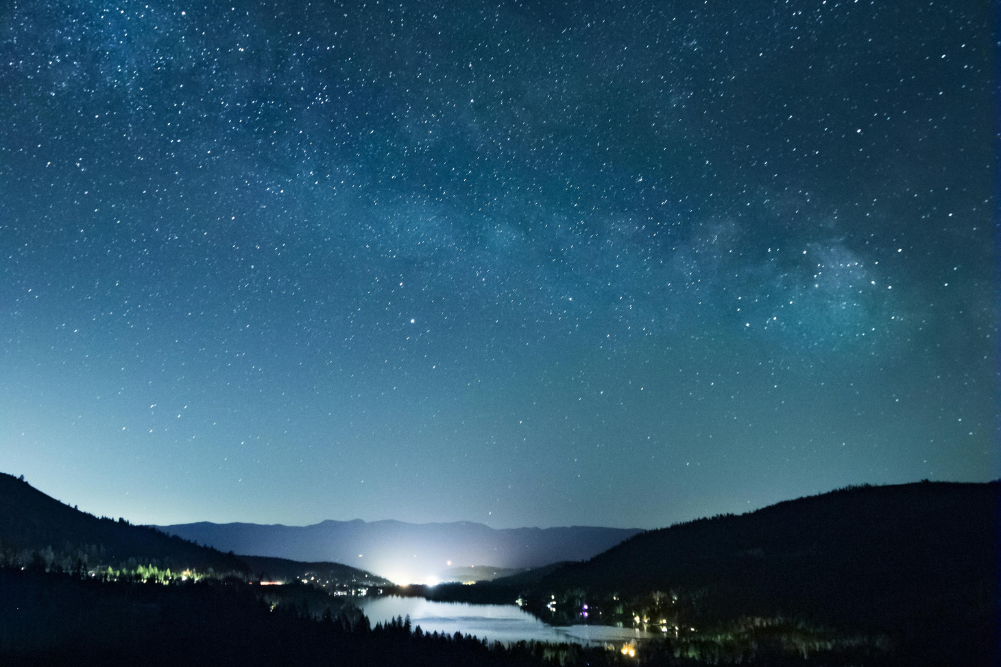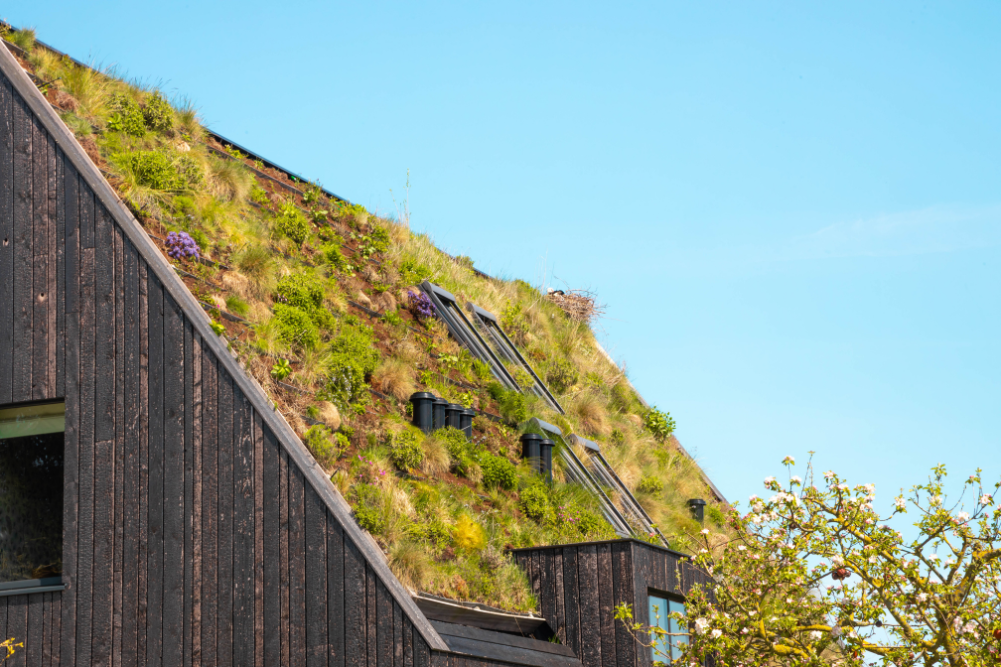The eco-renovation revolution
While no one sets out with the intention to contribute to global warming, Australians generate an average of 14,000kg of carbon emissions per household per year. Australians are also the second highest producers of waste in the world, with over 690kg of waste per person sent to landfill annually.
Aiming for a carbon-zero or carbon-positive home addresses these problems personally. Eco-renovation contributes an affordable solution that reduces the impact of the upgrade by reusing existing materials, and updates aesthetics simultaneously. Meet three delightful couples who hold sustainability at the heart of every renovation decision they make.
Paul & Tory von Bergen
Paul and Tory are the humble owner/builders of the award-winning Billabong Retreat Sydney in Maraylya, NSW: an eco-retreat on 12 acres of pristine Australian bush. A drive past the lotus-filled billabong takes you to their stunning and peaceful eco-renovated family home, sitting in harmony with the natural beauty of their surrounds.
The von Bergens are not builders by trade, yet a large part of their renovation is DIY. “We don’t use a skip,” says Paul. “If it’s painful to get rid of stuff it helps you think about what you’re doing.” He adds, “When you take walls apart carefully enough to reuse the timber, it has to be do-it-yourself. We reused the timber studs from the kitchen in the study walls, we took cladding from one wall and reused it in another. When it came to plumbing, I dug the trenches, got all the materials, then the plumber did the rest.”
Their home eco-renovation added solar heating and grid-connected solar photovoltaic power as well as extra insulation in the roof, walls and underfloors, and replaced a flat wall in the north-facing loungeroom with glass. They built the deck awning to accommodate the winter — not summer — sun.
“We are not on mains water or sewage any more,” adds Paul. “We put in a greywater system, so all our bath and shower water is diverted straight to our orchids. We have an aerated wastewater system that waters our screening plants and we use dam water for anything else we need. We put a lot of research and effort into getting the roof-harvested water right. The kids are young and drink the bathwater, and you can get dead rodents in tank water, so it all needs to be filtered.”
The von Bergens sourced secondhand bifold kitchen doors and study windows from eBay. Paul explains, “Those were hardwood, so it’s very important to go secondhand because new-growth hardwood forests aren’t holding up ecologically; they don’t have the same level of biodiversity.
“As well as the embodied energy within the material you need to consider the ongoing energy, and that takes some thinking [about],” Paul notes. “At Billabong Retreat we minimise the use of concrete, which is the number two source of carbon emissions on the planet after energy, so we don’t use slabs. Plantation pine, organic solvents, water-based paints and stains, secondhand furniture are all important,” says von Bergen.
The couple view consumer choice as an important part of advocating sustainability. “You’ve got to ask the merchant where the timber is sourced: if it’s plantation pine, if it’s certified, if they can supply Light Organic Solvent Preservatives timber. Some merchants laugh at you, but with research you can get the right stuff and create exactly the look you want.
“We used blackbutt hardwood on the deck, as it’s hard to trace the origins of merbau [timber] and most of it comes from Asia where there is illegal deforestation happening. Secondhand hardwoods are more expensive than new, so you have to ask yourself some hard questions. The cheapest isn’t always the best.”
The von Bergens also make a point of trying to return any packaging, like the polystyrene the ceiling fans came wrapped in. “Even when you get knocked back or you’re not well received, you can’t just give up; you’ve got to keep trying. If enough people do this, they will take notice. We all have a responsibility to do our bit for the planet.”
Tony Edye & Sally Wilson
Tony Edye and Sally Wilson are passionate about the eco-renovation of their Bilgola Plateau, NSW, home and office. Edye is a professional architect and has been designing houses and corporate buildings with the basics of sustainability in mind, but explains, “When you start living sustainably in your own home, you realise there is so much more you can do.” The couple were involved in Sustainability Street and the Sustainability Hub in Willoughby, NSW, and together started bringing more ideas about sustainability into their way of life.
Edye’s home office is a beautiful, light-filled eco-renovation, complete with water views, transforming what was previously a dank under-house area of the home. Using existing walls and ceiling frames, Edye and Wilson recycled the bricks and stone into Garden hedges. They used green polished concrete, which uses 40 per cent less cement, for thermal mass, sealed it with a water-based sealer and applied a low-chemical membrane under the slab.
Zero-emission MDF ceiling panels were installed and veneered with local silver ash timber. They used Forest Stewardship Council certified timber stair treads, connected a photovoltaic system to the grid, insulated the walls and floors of the house and put on flow-restrictor taps, solar hot water and a water-saving shower rose. LED lighting was installed in the office with individual switches for each light, and a switch turns off stand-by power overnight.
“We decided that every conceivable decision we make will be with sustainability in mind,” Edye says. “Deciding on double-glazed windows and door panels in the office only added 10 per cent to the overall cost. The plant-based oil for the timber doors, ceiling and windows was probably twice as much, but the Beauty of it is it doesn’t smell and is not off-gassing for years like the others.
“Many tradespeople do things the same old way and put up with the disadvantages. We asked to use high-density polyethylene (HDPE) instead of PVC because of the toxins involved in manufacturing PVC.” Since HDPE requires special equipment for thermal fusion, Edye says the plumber lost interest in the job and had to be replaced.
The couple incorporated some clever eco features into their home, such as zoning an open-plan living area in winter with double curtains of heavy Indian cotton for added warmth and using a DIY double-glazing of existing windows upstairs called Clear Comfort. These features, explains Wilson, can also be used when renting a property. They even renovated the retractable clothes line with a permanent, clear roof drilled above, so clothes can be dried in all weather conditions. “This removed the need to ever use a dryer again,” Wilson says.
There are very few rules as to what defines a sustainable building. “Building code only Deals with energy and water and not concrete, finishes or lighting layout,” says Edye, who is busy writing up steps to a sustainable home with local council. “We are trying to find a way to embed sustainability into the building approval process. Our aim is for the next generation to live in a sustainable home that won’t cost anything to run.
”We like to educate people about sustainability. A lot of people aren’t informed.”
Oliver & Betty Ockerlander
Oliver and Betty Ockerlander own Better Homes Realty in the Sydney suburb of Epping, NSW, and are currently converting their 25-year-old Glenhaven home from an old-style Aussie design into a thermally efficient, modern house. Theirs is an extensive eco-renovation under the guidance of designer Dick Clarke from Envirotecture.
“Australian homes haven’t been built or insulated against the cold winter properly and people just put up with it, letting their money go out the doors and windows through the gaps,” explains Oliver. As real estate agents, he and Betty see a lot of expensive properties designed without eco-efficient inclusions. They say residents are complaining about the financial burden of heating and cooling their homes.
Clarke, their designer, convinced the couple to renovate rather than rebuild since their home’s original design was already a passive solar orientation. The renovation stripped the home right back to the frame and brick veneer, with only timber studs and concrete slab internally. The northern wall was low, so they lifted the roof to get passive solar.
Adds Oliver, “We used double-glazed windows with thermally broken frames that have air gaps inside the frame, which means the cold won’t come through the frame. The double-glazed doors include a lip that completely seals the door, so there are no gaps at the bottom of the door, and the door itself fully seals off within the frame.” He says the change to these windows and doors costs around AU$10,000 more, but, “The benefits and ongoing cost savings we’ll receive made it a no-brainer decision for us.”
Increasing thermal efficiency involved insulating on top of and between the rafters, then adding the battens and Gyprock, effectively creating two air gaps for a better thermal result. All the walls are foamed out with an environmentally friendly product. Oliver advises that you don’t need to go back to studs to insulate. “You can go through the gap between the stud and brick wall to foam it out, and it would only cost around AU$2500 to do an entire house. Just doing a few small things like that will make a huge difference,” he says.
They considered the thermal and reflective properties of all Colorbond options and changed the roof colour to Surf Mist, a much lighter shade. “Dark roofs get way too hot,” notes Oliver. “Clarke provided information about the ongoing cost savings of a lighter roof, which is well worth the change over time.”
The couple installed an 8kW solar system on the roof but decided against solar-charged batteries for night power due to the cost. “The pool pump, fridges, washing machine and dryer won’t cost anything to run during the day, so we’ll put the washing machine on a timer to run off solar,” Oliver says. “At night we are back on the grid. We have an inverter, so what we don’t use gets fed back into the grid until we get batteries. Then we’ll be completely off the grid.”
While it’s costly up front, they believe the solar installation will pay for itself within four to five years. “We are utilising free energy, which is what it’s about. We have limited resources on the planet and you need to look at your footprint somewhere. If we all do a little bit, things will improve.”
Another factor is finding good tradespeople who are happy to embrace change. Jamie from Superior Construction has been building conventional houses for the past 20 years and was keen to learn sustainable methods from Dick Clarke. This was Jamie’s first eco-friendly renovation. Says Oliver, “As a builder, Jamie knows sustainable housing will be the way of the future. An energy-efficient star rating for homes will soon be introduced before a home is allowed to be sold or rented, and most homes in Australia won’t receive a very high efficiency rating unless they update for sustainability.”
As for builder Jamie, he believes he’s “learnt a lot on this job”. “A lot of clients are interested in using recyclable products as well as saving money on electricity. I’m learning how to do things differently. It’s great to be able to do it the best way possible.”
Where do you begin?
If you’re planning to reduce the carbon footprint of your own home, the government website yourhome.gov.au — Australia’s guide to environmentally sustainable homes — is a good place to start. New Zealand’s ecodesignadvisor.org.nz also provides beginning information, including free advice through local councils. You can also consult with sustainable designers like Tony Edye (tonyedye.com.au) and Dick Clarke (envirotecture.com.au) and begin your research. The ecological store Eco at Home (ecoathome.com.au) in Willoughby, NSW, is a great example of where to buy eco-renovation products, and the store owners are very approachable.
Once energy ratings affect property sales, demand for eco-renovation will likely increase, and designers, suppliers and tradespeople will need to be ready. Perhaps future housing trends will drive sustainable lifestyle changes towards a greener future. Consider what you can do to reduce your home’s carbon emissions — and let the eco-renovation revolution begin.
Kylie Terraluna is a writer, yoga teacher and mum who used to go by Kylie De Giorgio. New beginnings heralded her new name; a boomerang of light traversing the earth and the moon. W: kylieterraluna.com.au







